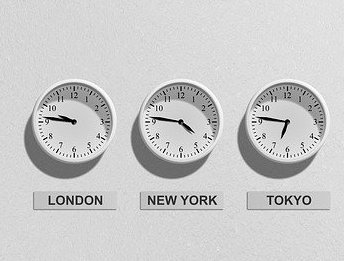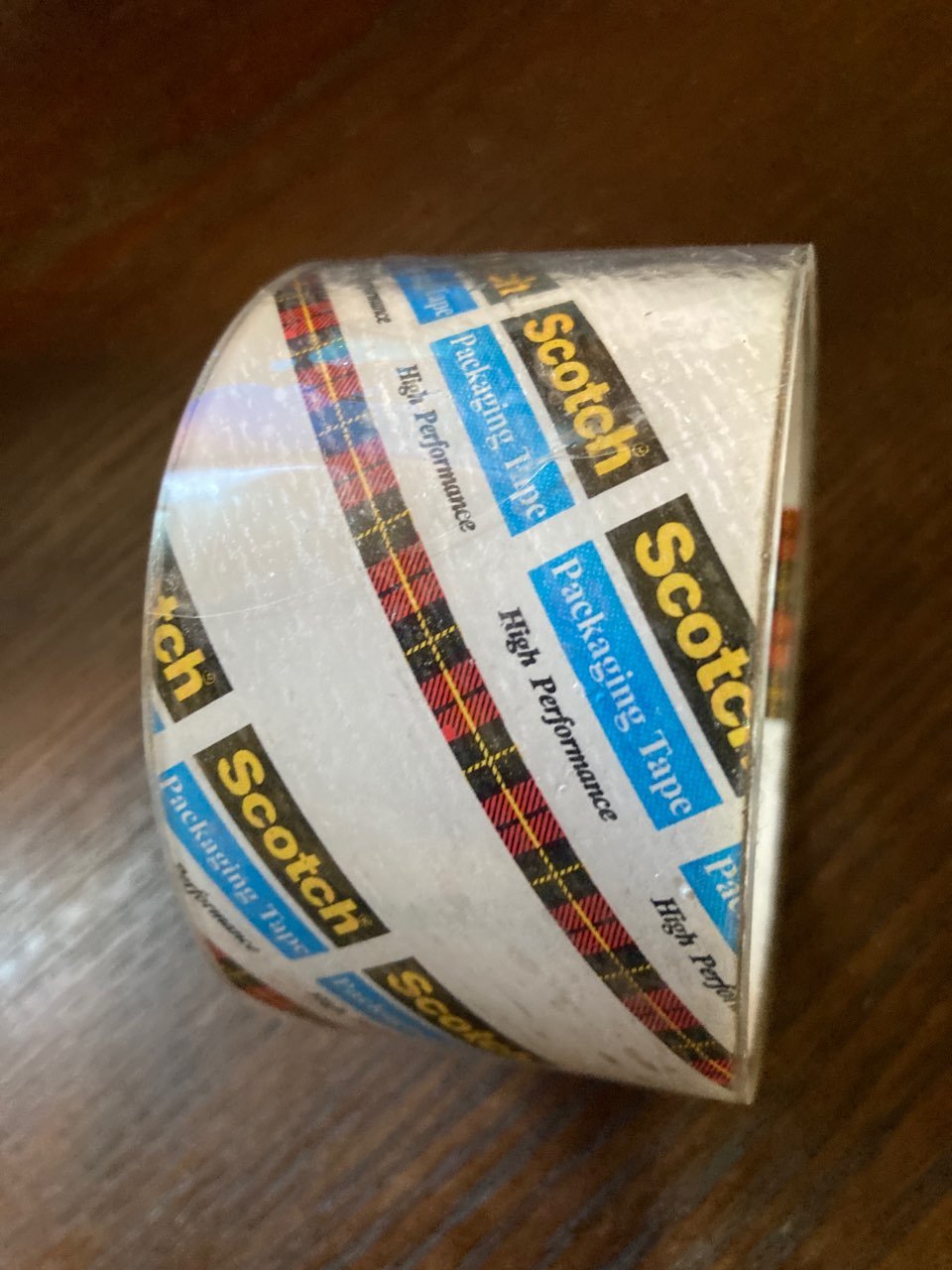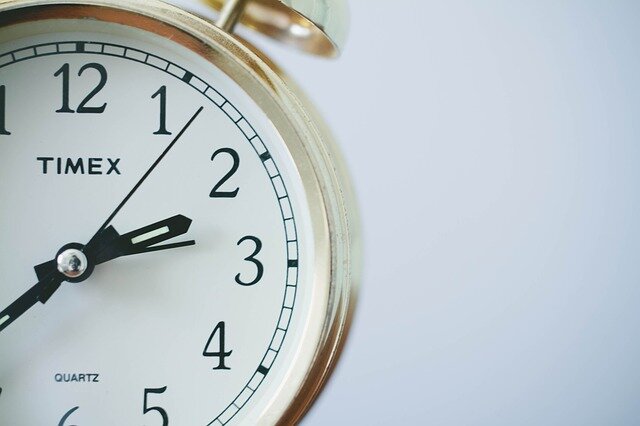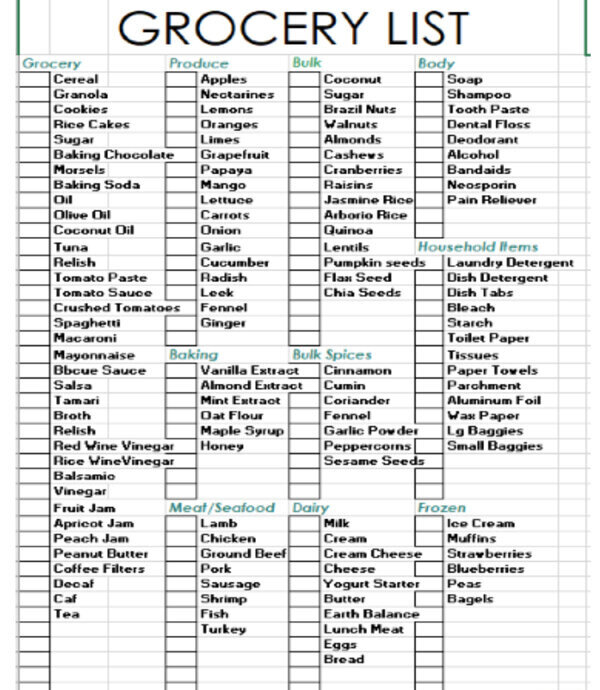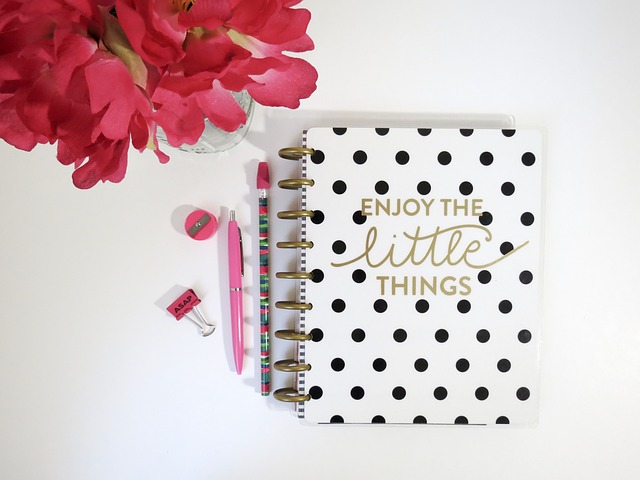Before You Think “Heck No”, Hear Me Out on Estate Sales
If there’s something that will make your life easier, it’s within your budget, and bonus if it’s gentle on the environment, then I say “go for it!”
At some point in your life, you’ll need to downsize your household. If not yours, you may be asked to assist a relative or friend with the process. It’s all part of the accumulation of stuff story. Make the process as pain-free as possible.
Release accumulated household goods as pain-free as possible.
Challenging Preconceived Notions
You may have preconceived or validated notions about estate sales, but hear me out. Initially, I was hesitant about engaging an estate sale company for clearing out my mom’s former home. I heard many pros and cons about estate sales and estate sale companies. As an organizer, I’ve come across some top notch firms that have illuminated the benefits. Additionally, mom’s realtor highly recommended a local company that pleased her clients, and passed her eminent standards. Gratefully, years ago, I compiled Managed Estate Sales: Tips & Questions to Ask Before Liquidating which guided me step-by-step through three prospective company interviews, and to monitor the execution process.
Choosing the Appropriate Company
Following my guide, the selection decision was a no-brainer. The realtor’s recommended company was heads and shoulders above the rest. The co-owner was a jewelry and collectible appraiser with an eagle eye and years of appraising and negotiating experience. Their eco and social ethic aligned fortuitously with mine. And, they were willing to squeeze us into their fully-booked calendar in order to execute our home sale on schedule.
Thankfully Outstanding Results
All in all, the profit for mom’s household goods was well beyond anything I could have attained with the limited time and residual bandwidth after donating as much as I could over many trips back east. The company kept me apprised with daily reports of attendance, and an inventory of items sold. The “boots on the ground” realtor was blown away by the company’s efficiency, security measures, and the meticulous clean up after the 3-day sale. Unsold items were sent for donation, if in reusable condition. The remainder was recycled or trashed.
Determine if Estate Sales & Companies are For You
Estate sales aren’t for everyone. Not all estate sale companies are as reputable, astute, or conscientious as the one I engaged. However, it may be worth your time, energy, and wallet to explore this route. Here’s an Estate Sale Guide to help you manage next steps. Bookmark it for later use, you’ll need it someday.
Do the Two-Step to Knock Out 1 Thing
Today’s tip is super short because I have a lot to do. I bet you do too. It’s only 2 steps.
Step 1. Take 1 Manageable Action
No worries if you don’t get to all the dirty mugs and dishes. Grab one. Put it in the dishwasher. That’s one less item of clutter.
Keep the action as small as your time and bandwidth permit. No clue what that is? Here are some ideas.
For me, it was writing this tip yesterday. Today my one small action is posting this tip to my website. Tomorrow, I’ll log in to social media, and schedule it for release.
Step 2. Thumbs Up
Pick up one toy and toss it in the toy chest. That’s one less chance of tripping. One less piece of visual overwhelm.
Let’s not overlook that you’re one step closer to completion of your household chores (or whatever the bigger personal or professional context) as a result of one small action. That’s worth celebrating or at least acknowledging.
You’re likely to encounter the “Yes, but…” admonition, if that happens, try any of the following:
That’s it. I’m done. I feel accomplished. When you take one small action, I hope you’ll feel gratified too.
When Productivity Hacks Backfire
Rarely does spam turn out to be fun. This morning, it was. The third recruiting email for an advanced health-care position led me to a Google search of myself. I wanted to see where my “online resume” indicates I’m qualified for that line of work. What I found instead was an article associated with my name. Nothing to do with healthcare mind you. Turns out, material I submitted to the writer almost 3 years ago was included in a productivity article. Slipped my radar. Such a cool find.
If you read my April blog, were you surprised at my dubious perspective on systems? Not what you expected from an organizer? Organizers should adore systems, shouldn’t we? Sometimes systems aren’t all they’re espoused to be. If systems or the absence of systems drives you bat crap, I suggest you give the blog a look. Like wonky systems, sometimes sure-fire efficiency hacks, the ones guaranteeing pure efficiency gold, instead end up delivering a disappointing pile of coal.
Not all productivity hacks will deliver. Experiment until you find the ones that work for you. Image by Gerd Altmann from Pixabay (modified to reflect hack backfires).
Is it just hopelessly you who can’t seem to make these shortcuts work? Assuredly not. Margarita Tartakovsky, author of the creative mental health journal “Vibe Check: Be Your Best You" warns readers about productivity hacks that backfire. In other words, what us experts proclaim is “the way” is not necessarily the roadmap for you. 5 commonly shared productivity hacks are reexamined. Where do they fall short? How can they be reconstructed to fit your uniqueness and needs? Take a look at my suggestions along with those contributed by productivity specialists to get results with less stress, more motivation, and greater expediency in 5 Productivity Hacks that Actually Backfire. A huge thank you to Margarita for including me.
And, if you’re a writer looking for content contributions, let’s chat. Check out this ever-growing list of articles quoting ThePracticalSort. Learning 2 weeks in a row that I’ve appeared in publications warms my heart and feeds my soul. Truly grateful.
If you prefer less wasted time, distress, and pain, notice how long it takes to put away the one thing in your hand vs sorting through piles, then rehousing each item. Try this tip to expend seconds vs minutes or perhaps hours and days.
The need for this tip continues like many piles scattered around the home. Therefore, I thought it would be an appropriate time for a reissue.
Would you rather have one cavity filled or 3? If you’re like me, you’re thinking zero. Less means so much more when something is a drag or hard to do. Like dealing with piles of paper, toys, and general household junk. So why do we create piles?
We create piles intending to get to them when we have time rather than put away the one thing that’s in our hands. The more items in the pile, the more time it takes, the more taxing on our brain and energy. That one item would have only cost us a minute or 2.
I hear a number of reasons from my clients for piling. What I find interesting is that while they have visceral frustrations with piles, they have rarely thought about the benefits of pile avoidance or simply find themselves stuck with where do I put it? With no clear guidance, it’s dropped wherever.
I get that you don’t always have time in the moment to run to another part of the house to put something away, so delaying is a time saver. But is it really? If it takes 2 min to put something away vs. 10+ min to sort through a pile and relocate multiple items, are you saving time in the long run?
I also understand experiencing difficulty determining where something should live. Select a place that makes sense to you or the primary user. Where would you look for it? Where is the most convenient place for quick grab and go? Where are other similar objects housed? Is there room? If not, would it make sense to relocate other items that may not fit that location? Experiment, see what works. If it doesn’t, try somewhere else. Ask someone for their thoughts if you are truly confused. If you have a bunch of small, one-off objects, house them together or establish a location note on your phone for rarely used items and their locations. Remember, if the location or process doesn’t score a win, no recriminations please. Simply allow yourself an experimental redo until you find the magic formula.
Rust stains along the collar edge spewed from the iron.
A moment of laziness equaled 30 min or more of failed remedies. Arrghh. Instead of running to grab a rag to place over a delicate cream poly blouse, I touched up a wrinkled collar directly with the iron. The crease was resistant after 2 tries, so I decided to press it once more. Shoot. The iron spewed rust along the edge of the collar. I immediately rinsed it, sprayed it with stain remover, and let it sit for a few days. No luck, the collar is still rusty. Fortunately, it was an old blouse, but it’s cute and wearable, well at least it was. Now another time suck researching how to get rust stains out. I know better yet I’m often hasty. That haste has cost me time and possibly the use of the blouse.
When ironing white or light colored clothing, grab a thin cotton rag. Place it over the garment and let the iron sit slightly longer than you would without the rag. I do a quick 10 count on each section, then adjust the rag and iron the next section. Yes, it takes slightly longer. It will still be quicker than trying to remove a nasty rust stain. Or worse, ruining clothes you love.
How do you clean an iron inside and out to prevent future rust stains? Check out this step-by-step guide from Home Depot. The Practical Sort assumes no responsibility for any damage to your clothes or iron from following these instructions.
Noting this small detail can save you embarrassment and lost opportunities. What is it? Read below.
Image by Michal Jarmoluk from Pixabay
The Time Zone Snafu
Did your professional work migrate to remote online platforms as a result of the pandemic? Then chances are you’ve encountered the Time Zone Snafu. I’m raising my hand. Chalk it up to haste and carelessness.
What’s the Time Zone Snafu? It’s when you note the time of an upcoming commitment, dutifully enter it into your calendar or e-scheduling program yet completely miss the start time-time zone. If you’re not working remotely, maybe you missed family Zoom calls or online Happy Hour with your gal pals across the miles---that’s The Time Zone Snafu.
Today was the second time, since the pandemic began, that I missed or nearly missed something because my eyes saw the time at a glance. Thankfully while today’s event sounded interesting, I wasn’t fully invested. I suspect that explains why I didn’t take the time to get all the info right. Another plus, it was recorded so I can catch the video once it’s uploaded. If the event was important, would I have slowed down enough to ensure I nailed the details? I’ll get back to you on that.
The last time the Time Zone Snafu happened, I nearly missed a class. I recorded the correct time, I just wasn’t in that time zone. Oops, that was East Coast start time, not West Coast. Yay for an observant colleague. She noticed I was missing, then texted to ask where the heck I was. I skulked into the first class of a live online course mightily embarrassed. But, these mistakes happen. They happen more often with a hummingbird brain that misses critical details when flitting from task to task. So far, gratefully I haven’t snafued for any client appointments, travel, or workshops that I’ve hosted (knock on wood that streak prevails!!).
The Snafu has made me more aware (usually, except for these 2 incidents) that I need to take extra time to seek out the time zone info. Now more than ever, so much of what we do is geographically diverse. Recording flight times and long distance events requires extra attention to ensure that I select the appropriate time zone info. Fingers crossed my phone recognizes the correct time based upon whereever my current location happens to be.
To avoid the Time Zone Snafu (and save yourself hassle and embarrassment) try these steps. Tweak if necessary. If you have a brain that operates way too fast, prone to carelessness, or you navigate through some form of ADHD, these tips will be useful for you.
Time Zone Snafu Avoidance Tips
- Slow down. Duh, right? I know, so much easier said than done. Time crunches, long to-do lists, others waiting for us cause us to speed up. When that happens, we miss critical data.
- Take a breath or 2 before proceeding. Set your brain and body up to receive the information and execute necessary next steps.
- Review event, invitation, or travel information. Is this something you wish or need to attend?
- Check your calendar to ensure that the day and time are open.
- Consider how travel time may impact your availability before and after the event prior to committing to attendance.
- Immediately record all relevant info into your calendar(s) of choice. This includes ensuring the correct starting day, time, year, TIME ZONE, location/log-in details.
- Add in a travel time buffer. My phone calendar has a travel time option to select. Set the notification alert based upon that buffer. If you tend to run behind schedule, choose a longer lead time. Remember, if you'll be in unfamiliar surroundings, finding transportation and the right location may take you longer than you’d expect. Airport and train travel is definitely taking longer especially as travel season ramps up and security lines grow longer. Pandemic staff shortages have resulted in longer delays.
- Record the event END day/time, next leg of travel, or subsequent event info (such as the start time and location of a reception following a wedding ceremony).
- Keep a paper planner? Record the same start and ending information along with location.
- By recording the event multiple times, it will give you the opportunity to review for accuracy. It will also give you a second or possibly third visual or auditory reminder to attend at the appropriate day, time, time zone, and location.
If you need to, create your own checklist on your e-device or on paper, whatever works for you to remember to hit all the marks and show up on time in the right place.
This tip is a reprint from December 2021. Why the revival? Time wasters really bug me, perhaps they irritate you too. Wrapping packages and sealing boxes is relevant this time of year. Noting how this tip, one that my mom passed along to me a few years back, has saved my fingernails, time, and composure, here’s a reshare to increase productivity.
If finding the edge of packaging tape slows you down, and drives you batty try this…
Finding the seam on packing tape can slow you down and cause frustration levels to rise
For the longest time, after cutting the tape, I quickly grabbed the roll end before it resticks. Fold the loose end back on itself to make a small tube shape. The next time I use the tape, I can easily find and unpeel the edge.
However, periodically that folded edge disappears. Whether it comes undone by itself or as the result of someone else using it and forgeting to carry out this folding technique. Scraping away to find the elusive starting edge can irritatingly slow the process down.
Position the clip head slightly above the top of the tape for easy grabbing and at the very edge of the tape to avoid the tape resticking onto itself.
Then on a visit several years ago, I noticed my mom uses a brilliant hack. After dispensing the tape, she inserts a paper clip onto the roll edge so that locating the start is fast and easy. Place the clip head slightly above the tape for easy grabbing and at the very edge to ensure little if any tape is wasted. This will also prevent the tape from resticking to itself. No digging around to find the seam or needing long nails to pry the tape loose. This can work for other types of tape too in order to hasten the process and lessen frustration. Adjust the size of the paper clip to fit the roll. Try it and see what you think.
I hope this speeds up gift wrapping and package shipping for you.
I’m old-fashioned, I love paper at-a-glance wall calendars. Admittedly I use e-calendars as well, mostly for the audio alerts to keep me on track. Getting back to paper, the most effective way I found to manage my family’s busy schedule when the kids were younger was the Mom’s Family Wall Calendar by Sandra Boynton or The Busy Family Calendar by Barnes and Noble. Sharing e-calendars wasn’t really a thing back then. I’m surprised to see that those treasured family calendars are still available via online retailers. Squeezing into the traditional calendar small squares all of the kids’ activities, my husband’s crazy business travel, and my assortment of volunteer commitments was nearly impossible and a cluttered mess. I tried categorizing each family member by color and writing in tiny print, but occasionally something would get lost.
This style of family calendar did the trick. Each of us had our own columns so it was clear at a glance who had what activities on any given day. In fact, we had an extra column which was used for family functions such as weddings, parties, theater, or neighborhood events.
Weekends are shaded so it’s easy to quickly differentiate weekend schedules from school, extracurricular, or summer camp days. Color-code each person or activity type for faster destination identification. Let the kiddos pick their color scheme and add their plans to help them learn about time management and schedule planning.
These calendars are longer (28”) vs. the typical 16” hanging wall calendar, so you’ll need to designate extra vertical wall space. However, I thought it was totally worth the extra space. If wall space is limited, try the side or front of the refrigerator. Some calendars provide magnets. 2-3 magnetic clips would do the trick to hold it in place. Give it a try. See what you think unless you are solidly e-calendar fans.
At least every few weeks, someone asks me about my favorite timesavers. Here’s a list of my top 5 timesavers, off the top of my head.
1. Speed up laundering. Take off clothes ‘right side’ out. Doing this as you undress is faster than right-siding clothes in bulk. If you tackle your laundry in spurts during short breaks, then time is of the essence, make it fast and easy. Remembering to do this undressing practice or getting others on board will take time and patience. Once the habit is established, you’ll notice how much faster you’ll finish.
Sort folded or hung laundry into categories based on order of room delivery. Powder room towel will go on top as the powder room is next to the laundry room.
Another laundry acceleration tip. If you’re running a large laundry load, each time you have a break, pull out quick drying items from the dryer. Fold and hang. This will hasten drying of the remaining items as they will have more room to circulate. Less items on a rack or line will give more room for other items to air dry. This is also a psychological trick. If it freaks you out to face a large load of laundry, removing and dealing with the quick dry items will make the overall load seem more manageable.
Finally, as you hang or fold, sort into categories by room order so that you can deliver expeditiously back to their point of origin. If your pile is divided into room order, then pull of the designated items as you enter each room.
Keep rags handy as reminders to wipe up crumbly or goey messes immediately
2. Tidy Up. Put items away after each use and wipe down countertops. With cleared surfaces and work stations, you’ll breeze through your tasks more expeditiously. Keeping kitchen and bathroom counters free of crumbs, grease, and extraneous splashes will help to speed up your dedicated cleaning time, and you’ll be prepared if guests stop by unexpectedly. Rags on hand will remind you to regularly swipe. It’s much easier to hide a rag if someone stops by than scrubbing a gooey, crumb-filled surface.
In fact, to make clean up even easier, place a rag under your cutting board to absorb any liquid run-off or catch errant crumbs. If you place a rag between you and the bathroom sink, it will help to lessen drips while brushing your teeth or washing your face. A quick wipe down of the shower after use will lessen the risk of mildew, soap scum build-up, or streaks on glass and tile. Those types of messes are time suckers. Use a microfiber cloth and circular motion to limit streaks.
Store objects in a way that makes sense for you for fast retrieval. Keep all professional files in one corner of a room or designate a file cabinet drawer for those documents. All personal documents go together in another drawer or file folder such as financial statements, tax reporting documents, appliance and repair receipts. All medical records categorized by family member or type of diagnostician in another file folder or folders. Knowing the location of what you need will allow you to lay your hands on it rapidly so you can complete projects with less down time.
3. Prep at night for the next day. Whether it’s ensuring that clothes are selected, laundered, and ironed for the morning; loading your car with any gear for work, gym clothes or sports equipment; taking out trash bins; setting up your coffee maker for your caffeine fix; prepping to-go lunches; ensuring ingredients are available and ready for tomorrow’s dinner; or setting up the slow-cooker so that you can prep and go; all of these steps will help expedite your morning routine and lessen stress. Who wants to get their day off on the wrong foot? Talk about a time waster!
Prep your morning caffeine fix
4. Lists and routines. Even if you’re not a paper list person, there are techniques that you can use as reminders for upcoming events, project due dates, or items that need replenishing.
Set electronic alerts to keep you on task or move on to the next appointment.
Use App check-off lists for each type of location. On my phone, I have folders for Home Depot, the pharmacy, library, specialty markets, garden center, and even a vacation packing/home-prep list (watering plants, lowering thermostat, et. al.). As I rarely shop aside from retrieving groceries, I reload on the on-going basics or novelty items as needed when I’m in the vicinity of any of those particular stores mentioned above using the check-off as my guide. Combining trips saves time, money, and hassle. For frequently used items, I like to keep an extra or 2 on hand in case I run out or in emergencies without overloading my storage cabinets. Last minute errands for toilet paper rolls are time killers.
I’ve talked about my grocery store list template many times, but here it is again for new followers. I use a pre-created grocery template. I print out a bunch on scrap paper with a copy on each side. Products are listed by aisle such as produce, bulk, staples, dairy, meats, and frozen foods. Most of my grocery products are repeat items, so this process is fairly mindless for me. I place a check mark or a number by each product if more than one is needed. Occasionally there’s a new recipe I wish to try composed of odd ingredients or a family member requests something new. For those items, I hand write them in the category/aisle as appropriate. At the store, as I head down each aisle, my eyes beeline to the corresponding section of my list. I can zip through this task easily unless butcher counter or checkout lines are long.
Routines or for those who dislike the word, substitute with “rituals”, take the thinking out of the task. Less thinking means less energy expended and less time wasted figuring out what do I do now and how? Establishing certain days for grocery runs (if possible), laundry or laundry category such as linens, administrative assignments, facilitates digging in immediately, churning through, and then moving onto the next to-do list item. Routines will also help you establish how long certain tasks take. Familiarity will help you devise more efficient ways to get through with ease such as breaking them into smaller segments as openings in your schedule allow. For example, if you’re working at your desk, during your next potty break, grab laundry from the washer and throw the load in the dryer or onto a drying rack. Fold and hang the clothes during your lunch break. By now you’ve probably figured out today is my laundry day.
Be active. Move to transition, release excess energy, malaise, or brain fog. Image by Haeruman from Pixabay.
5. Move. Take frequent breaks. Movement helps clear the mind. Release excess kinetic energy. Activity enables smoother transitioning from task to task by allowing your mind to release what it was working on and embrace the next action. Relieving pressure on your spine after long-term sitting reduces malaise and for me it lessens my brain fog. Stretching, especially releasing the shoulder and back hunchiness due to hours of computer work, not only feels good but it will help to pump up your circulation and relieve tension in your arms, shoulders, and neck. Why is this a timesaver? Brain fog, malaise, confusion, impatience, physical pain, those things impede progress. A few minutes of breaks here and there will spare you wasted time in the long run.
Actually, as an efficiency maven, I have lots of tips that I use, but I rarely recognize them as special since they’re part of my daily rituals. I’ll make a more concerted effort to notice and post more as they pop up.
My morning coffee is ready with low hassle
Are you a morning person? Most of the people in my circle are not. My high energy parts of the day are between 8 am-11 am, so I try to make the most of those hours for brain intensive work. My vitality window has narrowed since sheltering in place as I find myself getting drowsier with long periods of sitting at my desk or staring at Zoom calls. Because I’m keenly aware of when my high potency hours are vs. when I’m dragging, I want to make the most of each minute. How do I do that?
My bio clock tends to go off between 4:30 am-5:30 am. While it’s light in the wee hours, I allow myself to usually lie and meditate or go back to sleep if I can until 5:45 am, then get ready for my walk. In order to get out the door in a timely fashion, I prep as much as possible for my day in the evenings and then address a few details before I head out the door so that when I return, I shower, make breakfast, then start my work day. With a streamlined routine, my pace is more relaxed in the mornings.
Prep your breakfast as much as you can before you close up the kitchen or head to bed to sail through your morning routine. Image by Pexels at Pixabay
Here are a few suggestions for night time prepping to avoid frantic mornings.
Dirty Dishes in the sink. Not in my house. Image by Achim Thiemermann from Pixabay
Fill the kettle or coffee maker with water. Add coffee beans to the grinder or coffee maker. Your caffeine fix will be ready when you need it. Set out your cup or travel mug.
Run then empty the dishwasher. It’s agitating to see dirty dishes on countertops or in the sink first thing in the morning. Not having to deal with dishwasher unloads is one less to-do during busy mornings. An empty dishwasher will have space for morning breakfast dishes and cookware so you can leave with clear table and countertops. When it’s time to make dinner, a messy kitchen won’t slow you down. When you empty the dishwasher, reset the table with clean utensils so your table is prepped for the next meal.
Tidy the kitchen when dinner is finished. Wipe down the counters and stove. Facing a stream of ants or vermin isn’t a fun way to start a day.
Prep breakfast ingredients. Set out cutting boards and any utensils or cookware that will speed up your morning routine. Place a rag under the cutting board to catch any drips or crumbs.
Pack up your car with your workbag, backpacks, work-out clothes, sports equipment, or anything else you might need during the day or place near your home exit door if your vehicle isn’t in a secure location.
Clear everything off your desk before you leave it each night. If you need visual reminders, set out the files you will need for your first appointment or initial task to avoid brain overwhelm. Tuck additional papers and bills inside your laptop as a reminder. Set electronic alerts for appointments or tasks for the following day to keep you on schedule. If you’re a list person, make a list. Highlight priorites.
Prepare water bottles, snacks or bagged lunch and refrigerate. Leave a note by your keys with a list of items you need to take with you including food and beverages.
By having all this done the night before, I can often squeeze in my walk (if it’s light enough) and shower before heading out the door for business or get down to admin work at my computer. Mornings are much more manageable by getting a few things out of the way before shutting down the kitchen at night or heading off to bed. Advanced planning and action will help your whole day go smoother.
Use a planner to go from initial list-making to scheduled, actionable tasks. Image by Miesha Moriniere from Pixabay
I recently hosted another decluttering workshop. And while there were many highlights for me, I find that audience questions are exceptionally invigorating. Not only does it let me know that they are engaged, inquiries fire up my synapses and spark my creative juices. When other audience members share their related experiences and solutions, I find the dynamic even more captivating. Yep, I’m the professional organizer. As the host, I’m expected to be the font of all organizing knowledge. The reality is I may not have all the answers or at least in a way that’s going to rock your world. We are all different, and we come to the equation with unique strengths and challenges. With each new perspective, we might unearth the right key to open a new door for you.
With permission from the workshop attendees, I will share what happened that night. One of the audience members explained that she is an avid list devotee. Quickest route into this organizer’s heart, love my lists. In the next breath, my glee deflated when she confessed that her many lists languish untackled. She frequently has other priorities.
Well, if she is actually focusing on priorities, then that is outstanding, and I acknowledged her for that. Knowing how to prioritize is an advantageous and often scarce skill. I also suggested some quick and dirty motivational techniques. But that did not abate her frustration with the list lingerers. Up went another hand, a self-professed planning geek. I love it. She offered her methods for extracting items from her lists and inserting them into actionable, scheduled to-dos in her planners and dashboards.
If you are unfamiliar with planner dashboards, they are ‘at a glance’ inserts that can serve multiple purposes reflecting your individuality. They can be pre-made or self-crafted to be motivational (“You’ve got this!” messages, promises of rewards), inspirational (quotes, photos, artwork, spiritual reflections), functional (to-do lists, upcoming meetings or parties, reminders).
Here is her reply reprinted (with permission) courtesy of a follow-up email outlining details.
Erincondren.com planners and dashboards
Here’s a link to the dashboards that I shared [at the workshop]: erincondren.com/dashboards. I’m not putting them in a planner, but more accessible places (for me) such as the habit tracker on the refrigerator, the bill tracker in the drawer with pens/ post its/ etc.
Yes, I’m using Erin Condren planner right now, but many similar ones are on the market. I use this planner to prioritize daily to-do’s, but I use a bullet journal to “dump” all the extensive lists of "things to do" with associated phone numbers, contacts, etc. The bullet journal may include projects that are being developed for some distant time in the future, as well as current obligations. It was easy to add an index: e.g. p. 1 May To-Do Lists, p. 2 dining room table refinishers/repair, p. 3 June/ July To-Do Lists, p.6 Bike Fitting Recommendations, p. 7 Mom’s estate information.
I am a bit of a planner geek. This is the [Office Depot] planner I got for work: The pages can be removed/ rearranged. There’s lots of space for organizing lists, documentation, etc.
—Laurie A.
To be honest, I am a simple gal relying on a mixed bag to keep on top of life. I like scrap paper lists and enjoy my elated high as I scratch off accomplished items one by one. I also use paper calendars featuring my own photography. The wickedly beautiful shots and memories inspire me to use them for upcoming events, vacations, visitors, holidays, and special occasions. Finally, electronic schedulers alert me to pending meeting dates, times, and various appointments. What works for you? Not much? Give some of these hints a try.
This tip was originally posted in March 2019. Now updated with new reflections and ideas in October 2022.
When getting out the door is more than half the battle every morning, that can be super frustrating. Try some of these tips if you notice your blood pressure soaring, work performance tanking due to late arrivals or chronically missed appointments, and your moods are sour before 10 am. Play around with them, tweak as needed.
Think about how late you typically run. 5 minutes? 10 minutes? More than 10? Then set your home and car clocks ahead by that amount to build in a cushion. For instance, if the current time is 10:00 am, reset your clock(s) to 10:05 am if you run behind by 5 minutes. If you run later than that, push the clock further. Let other family members or roommates know, so they can gauge accordingly.
Now ignore what you just did. Although your clocks are set a few minutes ahead, don’t fall into the trap of lazing in bed, catching up on emails, checking social media thinking you have extra time. Pretend the time is accurate.
Set your alarm clock 15-20 ahead of when you NEED to wake up. This will fatten your time allowance cushion a bit more and enable you to fit in a healthy breakfast or a quick chore or 2 (feed the cat, toss in a load of laundry, unload the dishwasher) before you head out the door. Select chores that are fast with a clear ending. Nothing that will cause you to lose sight of time.
Set 3 electronic audio reminders. Schedule alert #1 to chime 30 minutes before leave time so that you begin wrapping up whatever you are doing. Alert #2 should sound 5 minutes before its time to head out the door. This is your signal to gather your keys, computer bag, purse, and for potty time. And finally alert #3 notifies you it’s time to LEAVE.
Admittedly the trick is to remember to set your alerts. Put a sticky note on your computer monitor or refrigerator. If your schedule is pretty much the same everyday, go ahead and set the alerts now on your phone or electronic calendar system. If it varies by day although the same from week to week, most e-calendars will allow you to choose repeating preferences. Give it a try, and tweak if necessary. What have you got to lose except all the baggage that goes along with late arrivals?
Linen pants always need pressing after washing. I ironed these straight out of the washer. The process went very quickly and the pants looked great.
Looking to save time ironing? Frankly, I rarely iron. I find creative ways to avoid it as I don’t enjoy it. When clothes are absolutely screaming for a pressing, I opt for the quickest way to zip through the process.
Try this: Iron your clothes while they are still damp. You can try straight out of the washer. If they are too wet, run them through the dryer for a few minutes or hang on the line until mostly dry. Face it, many times we end up spraying wrinkled clothes with water or steam to speed up the process so why wait until they are fully dry?
After ironing, immediately place on a hanger which will keep the clothes wrinkle-free and save you time after you have finished with the entire “to be ironed” pile.
Create a Distraction Free Zone
You are in the groove. Finally making progress on that project you have been meaning to tackle for weeks. The ideas are gelling, the words are flowing, then ding. A sound emanates from your laptop and a pop-up flashes across your screen. Your eyes dart just for an instant. Yet bam, you are now officially out of the zone. The words are no longer under your fingertips and the ideas evaporated as fast as they formed.
In a University of California, Irvine study, Informatics Professor Gloria Mark, researcher of workplace distraction, learned that while a typical office worker performs approximately "11 minutes between interruptions, it takes nearly 25 minutes to recover from the interruption" to return to the task at hand. Mark also noted that "the interruptions caused participants to report significantly higher stress, frustration, workload, effort and pressure".
Further researchers have found that constant distractions are resulting in poorer performance. Bob Sullivan and Hugh Thompson, authors of "The Plateau Effect: Getting from Stuck to Success" in conjunction with Carnegie Mellon designed an experiment to measure cognitive variations as a result of disruptions. Out of three groups comprised of 136 participants taking a test, those distracted or expecting an interruption performed worse than those in the control group who completed the exam unimpeded.
So not only is the incessant beeping and blipping from emails, social media alerts, phone calls, and texts causing you to lose valuable time, your work quality potentially suffers.
Your time is precious, your thoughts are worthy of sharing, and your work should reflect your best efforts. Yep, this is sounding a bit preachy, but after watching one email notification after another flash across the bottom of my screen, I decided to take action by shutting off all email and social media alerts and notifications. My fingers pounded out this tip without shiny object diversions.
Take the bull by the horns, go into your Settings and turn notifications to the off position and let those ideas soar.
1 nytimes.com/2013/05/05/opinion/sunday/a-focus-on-distraction.html
2 couriermail.com.au/rendezview/technology-is-creating-a-generation-of-dummies/news-story/5c84058176b9d2bf88e367c01663b4c7
Keep up with the Practical Sort's latest blogs and tips by subscribing here.
You probably know that you should swipe your dryer lint screen/filter after each load of laundry to remove lint build up. Isn't it amazing how much accumulates after each load? Surprisingly our clothes and linens last as long as they do considering the amount they shed.
Filter cleaning will enhance your dryer's efficiency reducing the drying time considerably, prolong the life of the dryer, and reduce fire risks. Do not use your dryer if the screen is damaged or loose as this can cause your dryer to overheat.
If you have never used a dryer before, the filter is typically located either on the top of the machine or inside the door depending upon the model. Remove it from the machine and roll the lint off with your fingers. Do not wet the screen before you remove the lint.
I like to take the extra step of gently vacuuming my screen weekly to ensure it is super clean. I hold the vacuum close, but not directly on it to avoid damage. Also vacuum along the outside edges.
Residue can cause clogs as a result of some laundry detergents and fabric softeners delaying drying time. If you notice that lint is in the dryer, it is likely falling off the screen due to obstructions.
To remove the residue:
Soak the screen with hot water, vinegar and baking powder and let it sit until the fizzing stops
Use a nylon brush to gently scrub
Rinse with hot water
Let it thoroughly dry before reinstalling
You may need to repeat this process.
Once a month, I use a flexible dryer vent vacuum attachment to suction out the lint left inside the machine's lint trap.
Remember to reinsert your fully dried screen when you have finished.
Prioritize your to-dos
I’m totally getting lazier. With each Practical Sort year under my belt, I’m learning to work smarter too. For as long as I can remember, I’ve always been an Efficiency Queen, so why not embrace efficiency with my publications? The more efficient I am, the lazier I can be. Hence, the last 2 weeks, I’ve dug back into my archives for meaty material. I looked for challenges I see frequently, and solutions that work. Resharing these tips, with new edited bits of wisdom tossed in, is a win/win for both of us. And it helps me prioritize my input and output.
Speaking of prioritizing, is that a sticky topic for you? How do you prioritize when everything is a priority? What's first? Next? Not at all? Prioritizing space? Time? People? Workload? Tasks? All that is mind-boggling and tiresome. Who doesn’t have way too many things to do with limited time, space, and bandwidth to address them?
Let’s break prioritizing down before you do. Where do you start and how?
Whether it’s tasks that need to get done personally or professionally, create a list so you’re clear on what needs to get done by when. Before you freak out about list-making, keep reading please.
Now that you’ve generated action items, it’s time to take it a step further.
When determining your priorities, where do you start and how? Try some of this week’s tip strategies. Image by mohamed Hassan from Pixabay
- How do you tell if it’s important? Who assigned it? If it’s your boss, that likely carries more weight than say a shopping for a new pair of shoes. Is it time sensitive such as taxes or a looming deadline? Is it something that is causing you chaos such as a broken oven or dishwasher?
- Move these types of items to the top of the list. Add due dates to your calendar. If you need checkpoints along the way to keep the project moving, add accountability due dates too.
- If you need a quick win to bolster your confidence or spark your motivation, select a task with a clear beginning and end that will take the amount of time you have available or less. Knock it out, celebrate, then move on.
- Delegate or enlist the help of others if you are completely overwhelmed. Offer up some margaritas to your gal pals in exchange for lending a hand organizing an area of your home that is driving you to distraction. Entice your kids to help with age appropriate chores to lighten your load. Make it as fun as you can. Pump up their favorite music. Let them dive into leaf piles as they rake the lawn. Play games like “Beat the Clock”. Award points for the most chores done satisfactorily before the buzzer rings. Plan a family pizza and movie night as a reward. Get as creative as you like.
Wish you could get around to your long-awaited organizing projects? Need an extra hand? Contact The Practical Sort. Let’s talk about what’s going on, what’s getting in the way, and how I can help.
Breaking Through The To-Do List
Do you keep a to-do list? How often do you look at it and think I WILL NEVER GET ALL OF THAT DONE! Implementing the 4 D's of Time Management, attributed to several different time management gurus including David Allen, author of Getting Things Done, provides a roadmap for you to cut through the morass of to-do list clutter and achieve the results you desire.
1. Delete/Diminish: Consider if the task will further your goals or the project's goals. If not, delete it and move on. If deletion is not an option, consider diminishing it by breaking it down into smaller pieces that you can tackle quickly. If you have no choice because your boss is expecting it on his/her desk in an hour, then you best get to it and delay other jobs.
2. Delegate: Is it imperative that you are the one who does the task? Yes, it may take longer to explain it to someone else or clean up after them if they do not excel at the execution. However, by teaching them how to do it, they will be able to take those kinds of tasks, chores, etc. off your hands in the future while giving them a chance to learn and grow. Sometimes we presume certain chores are too complex for young children, but they can be very capable of getting things done. Delegation helps them to build independence, responsibility, and character.
In fact, a 2015 longitudinal research study on household chores conducted by University of Minnesota professor Marty Rossmann followed 84 children during four distinct ages in their lives: preschool, elementary, high school and at the age of 20. At the last stage, they were interviewed to determine their success based upon college attainment, career path, IQ, substance abuse, and interpersonal relationships. The study found higher success rates among that were those who had started doing chores during or before preschool. Success rates were lower for those who started in their teens.
3. Delay: Take care of the urgent items first. Move on to the less important tasks when you have time. If the less important tasks are mindless, do those when you are not fully resourced since they require less concentration.
4. Do: Tackle the must-dos and the items that will get the biggest bang for the buck first. Or do the things you are certain you can knock out quickly particularly if you are not in a mental state to handle anything highly creative or requiring intense concentration at the moment.
I hope the 4'Ds will help you have a more practical and productive day.
You may be wondering why I have a photo of dust rags and sweepers under the heading "Walk and Talk." While placed on hold yesterday for 10 minutes, I grabbed my floor duster and swept nearly my entire first floor hardwoods and tiles before the Customer Service Rep returned to the line. Chore accomplished as we finished the transaction, 10+ minutes of movement felt great, and no time was wasted. So next time you are on hold, chatting with a friend, or waiting for dinner to finish cooking, grab a duster, broom, or mop and knock another chore off your list.
Pre-Prepare Ingredients
If you frequently make cookies, pancakes, scones, etc. that use the same dry ingredients, keep them pre-measured in a jar (plastic could impart odors if left too long). Used jam jars particularly the wide ones or canning jars are great. Then add the liquid ingredients when you are ready to bake, and voila your baked goods are created so much faster or in the case of pancakes whipped up quicker. When I have a free moment, I refill the jars, place them back in the pantry until needed again which is usually only a matter of days.
If you frequently use diced foods such as onions, carrots, etc., use your chopper to chop up enough for multiple meals. One less prep item during the busy weeknights.
Color Code
Your home improvement project includes touching up a kitchen wall. Your painter asks you for the color brand and code. You have no idea but you love the color and want it to remain the same. You no longer have the paint can. What do you do?
Keep a list of paint colors, codes, brands, and a swatch used for any home improvement projects. You’ll be prepared in the future for any quick touch up jobs or attempts to match paint for any other reason. For instance, you may love the color in one room and decide that same color would be perfect in another room. Same idea works if you move. You may have loved your old bedroom color and now wish to paint your new bedroom the same.
Store the list in a spreadsheet on your computer or file away in your home improvement file folder for future reference.
There is a chance the paint store may have your account information, so before you panic, check to see if they retained your project information. We were very lucky that our home's previous owners left us most of the paint cans with the color information. We also lucked out on a color where we did not have a can, but the paint store had the former owner's paint information still in the system.
The paint store may be able to replicate the color from a piece of siding or drywall. As a last resort, take a photo and see if they can assist with a close approximation.
If you have left over paint, write the room name on your can and whether it is for wall or trim. This has been especially useful for us where the exterior siding and trim were very close in color. At a quick glance, I could grab the correct can when needed.








